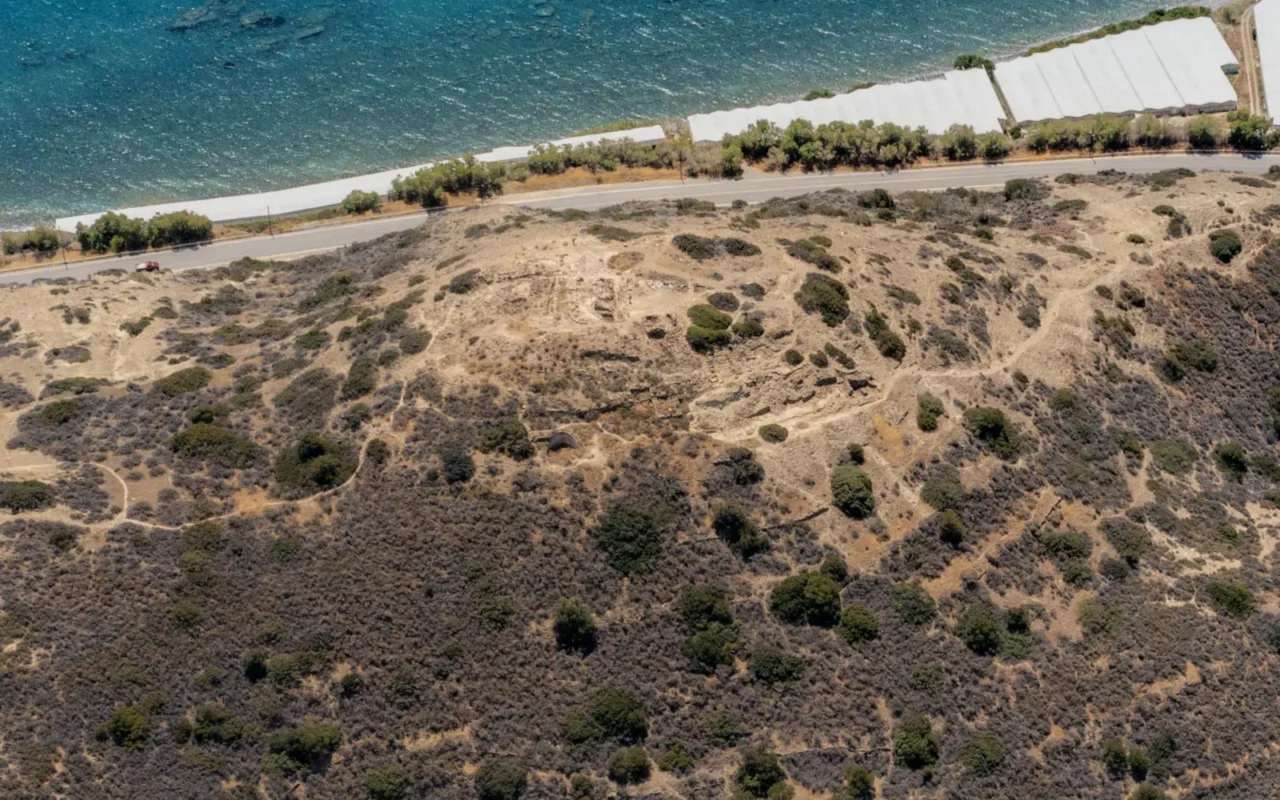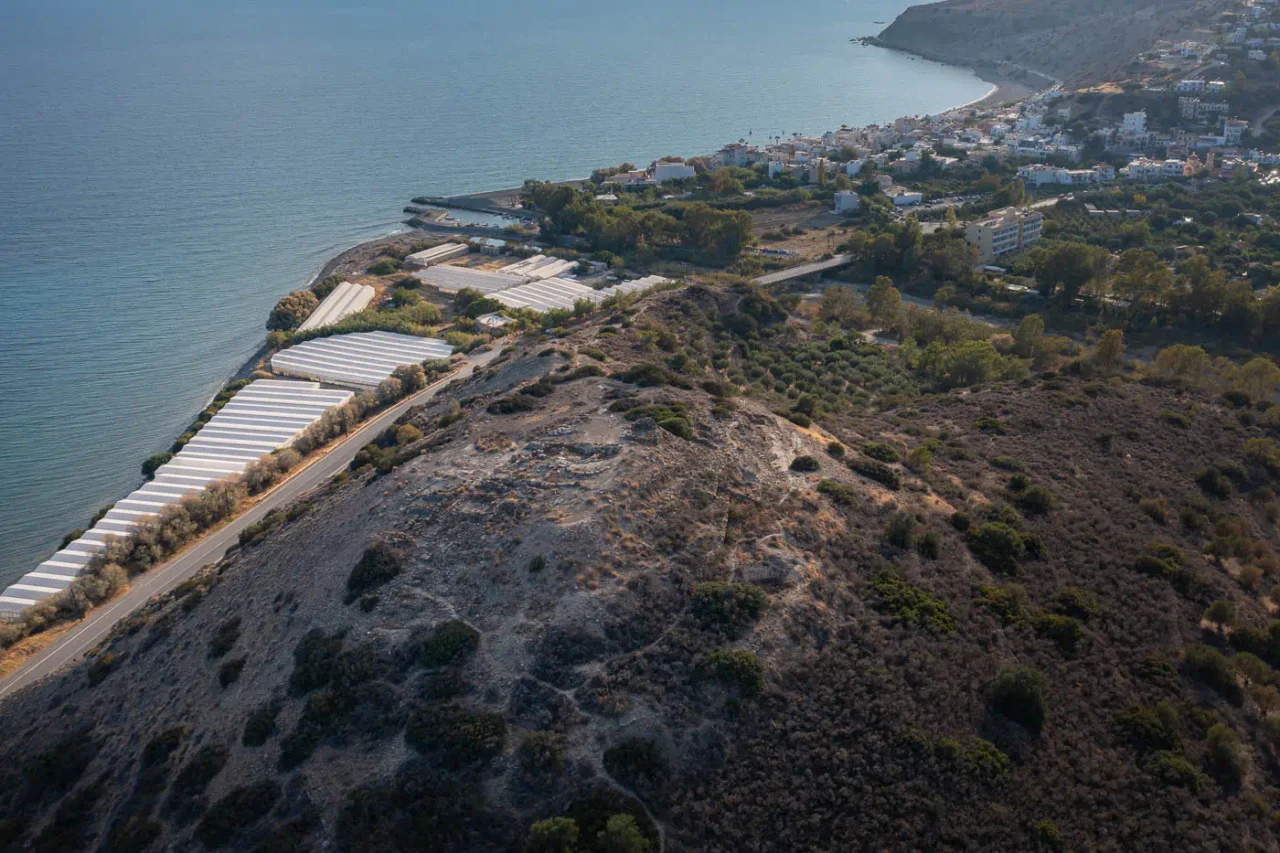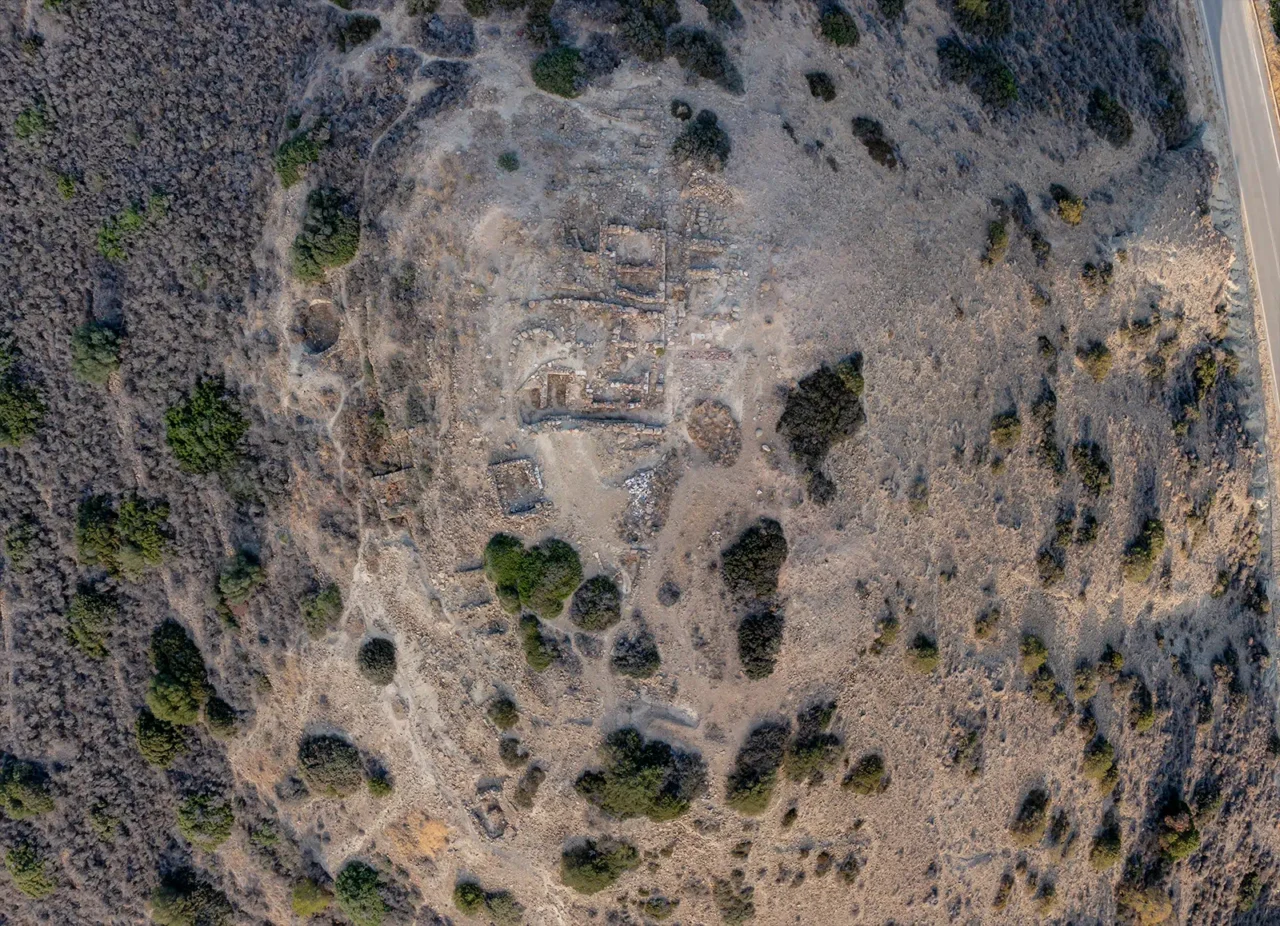


The Myrtos-Pyrgos archaeological site, often shortened to Pyrgos, is a significant Minoan Bronze Age settlement located on the southern coast of Crete. The site has yielded a wealth of artifacts and structures that provide valuable insights into the development of Minoan civilization from the Early Minoan II period to the Late Minoan IB period. The site’s long occupation and strategic location make it a key resource for understanding the social, economic, and political dynamics of this ancient society.
The Site and its Context
Pyrgos is situated approximately 14 kilometers west of Ierapetra and a short distance from the Early Minoan II settlement of Myrtos-Fournou Koryfi (Fournou Koryfi). The proximity of these two sites suggests a close relationship between them during the Early Minoan period. Excavations at Pyrgos have revealed evidence of various activities, including sealing, marking, and writing practices, indicating a complex and organized society.
Findings and their Significance
The archaeological record at Pyrgos includes a variety of artifacts, such as seals, seal impressions, roundels, noduli, Linear A tablets, and inscriptions on clay vessels. These findings shed light on the evolution of communication and administrative practices in Minoan Crete. The presence of seals and seal impressions, for example, suggests the importance of personal and communal identity, as well as the control and management of resources.
The discovery of Linear A tablets at Pyrgos is particularly noteworthy, as it provides evidence of the use of this early writing system in a rural settlement. The tablets, along with the inscriptions on clay vessels, offer glimpses into the economic and administrative activities of the site’s inhabitants. The presence of a possible Cretan Hieroglyphic or Linear A inscription on a pithos fragment from Tel Haror in Israel further suggests that Pyrgos was involved in trade and exchange networks that extended beyond Crete.
Chronological Phases and Cultural Connections
The occupation at Pyrgos can be divided into several phases, each with its own distinct characteristics and cultural connections. The earliest phase, Pyrgos I, dates to the Early Minoan II period and shows strong similarities to the nearby settlement of Fournou Koryfi. Both sites were destroyed by fire in the EM IIB period, but while Fournou Koryfi was abandoned, Pyrgos was reoccupied, possibly in the EM III period or during the overlap between the EM III and MM IA cultures.
The subsequent phases, Pyrgos II and III, are marked by a growing cultural sophistication and expanded connections with other parts of Crete. The presence of stamped jar handles, a practice concentrated in the Malia-Lasithi-Mirabello region, and the use of antique seals from central Crete, highlight the site’s integration into wider regional networks. By the Middle Minoan IIB period (Pyrgos III), the settlement had become wealthy and prosperous, with evidence of monumental construction, including defense works and cisterns. The discovery of Cretan Hieroglyphic inscriptions on seals and seal impressions suggests close ties with Malia during this period.
The final phase, Pyrgos IV, dates to the Late Minoan IB period and is characterized by a shift in the site’s political allegiance from Malia to Knossos. This change is reflected in the presence of Linear A texts and the Knossian-style architecture of the Country House, a grand structure that dominated the settlement during this period. The presence of luxury items, such as a faience triton shell, further emphasizes the site’s elite status and its close connection to the Knossian palatial center. The discovery of a roundel stamped with two seals, a practice otherwise known only at Knossos during the Neopalatial period, strengthens the evidence for a special relationship between Pyrgos and Knossos.
The End of Pyrgos
The LM IB period at Pyrgos ended with a catastrophic fire that destroyed the Country House and much of the settlement. The intensity of the fire, which vitrified pottery and splintered masonry, suggests a violent and sudden end to this once-thriving community. The reasons for the destruction remain unclear, but it likely marks the end of Pyrgos’s prominence in the region.
Myrtos-Pyrgos and Fournou Koryfi: A Comparative Perspective
The relationship between Myrtos-Pyrgos and Fournou Koryfi is a complex one. During the Early Minoan II period, the two sites shared a similar material culture and were likely part of the same social and economic network. The abandonment of Fournou Koryfi after the EM IIB destruction, however, while Pyrgos was reoccupied, suggests a divergence in their fortunes. The subsequent growth and development of Pyrgos, with its monumental architecture and evidence of elite activities, contrasts sharply with the fate of its neighbor. The reasons for this divergence remain a subject of ongoing research, but it likely reflects the complex interplay of environmental, social, and political factors that shaped the history of this region.
Archaeological Site: Key Points
- Construction Period: Early Minoan II to Late Minoan IB
- Location: South coast of Crete, near Pyrgos
- Historical Significance: Provides insights into the development of Minoan civilization, including sealing, marking, and writing practices, as well as trade and exchange networks
- Current Status: Excavated and partially restored; a subject of ongoing research
References
- Judith Weingarten, Silvia Ferrara and Gerald Cadogan 2024. Multimedia at Minoan Myrtos – Pyrgos, Crete, , Annual of the British School at Athens , First View , pp. 1 – 29 DOI: https://doi.org/10.1017/S0068245423000114
- Emilia Oddo, ‘Cross-joins and Archaeological Sections. The Myrtos-Pyrgos Cistern: Reconstructing a Neopalatial Stratigraphy’ In C. Macdonald, E. Hatzaki, and S. Andreou eds. The Great Islands. Studies of Crete and Cyprus presented to Gerald Cadogan. Kapon Editions: 58-62
- Vassilis Varouchakis 2011, ‘Myrtos-Pyrgos window stands’ in ΠΕΠΡΑΓΜΕΝΑ Ι’ ΔΙΕΘΝΟΥΣ ΚΡΗΤΟΛΟΓΙΚΟΥ ΣΥΝΕΔΡΙΟΥ (ΧΑΝΙΑ, 1-8 ΟΚΤΩΒΡΙΟΥ 2006)


There are no comments yet.